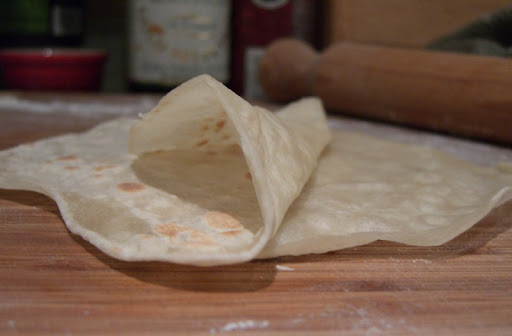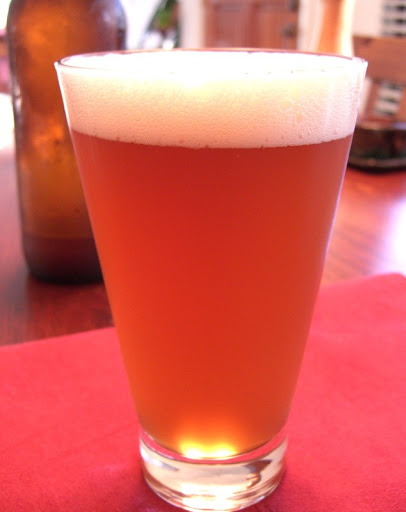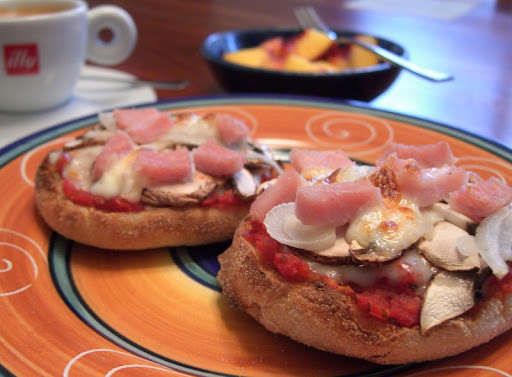August In Review
We are off on a three week road trip, so the August photo collage comes a few days early:
We are off on a three week road trip, so the August photo collage comes a few days early:
I recently added some new functionality to my photo collage generator. It now has mouse-over selection of the individual photo elements. Clicking one brings up a larger image with a recipe title. Clicking the enlarged image closes it, and clicking the recipe title shows the full-size picture.
I have updated the "July In Review" collage with the new features.



Back when Sherry and I first started dating at UCSD (I was a grad student and she worked in a neurobiology lab) I was starting to teach myself how to cook Chinese food with the help of a copy of the Sunset Chinese Cook Book. One day we decided to attempt what was then a somewhat daunting task - cooking Mu Shu Pork with Mandarin Pancakes out of said cookbook. Despite our trepidation, it came out great. More than ten years later we now have a lot more Asian cookbooks, but we still have that first one - yellowing pages stained with cooking sauces. And we are still making Mu Shu Pork from that same recipe.
First the Mandarin Pancakes. While we will admit to using flour tortillas instead when we are being lazy, it really does taste much better with these pancakes. The secret to getting them thin to the point of being semi-translucent is the special rolling out technique. First you roll out 3 inch rounds and then you brush them with sesame oil and stick them together in pairs.
After rolling out the stuck-together pairs even thinner, you quickly cook them and then gently peel the two halves apart.
The result is super-thin pancakes that would have been difficult or impossible to achieve without the stick-together technique.
The Mu Shu itself is a simple stir-fry with really fun flavors, both savory and a little sweet. Obtaining dried black fungus and dried lily buds (also called golden needles) can be difficult if you don't have an Asian market handy, but once you get a supply they keep basically forever. An easily procured, seemingly pedestrian but absolutely essential component is iceberg lettuce. Sliced into thin shreds and then cooked up with the sauce, the lettuce is transformed into a whole new beast - somewhat silky, slightly crunchy, and very satisfying.
Stir-fried with matchstick pieces of pork, carrot and bamboo shoots, everything comes together with the addition of some soft-cooked egg.
Time to eat! Take a pancake, spread on some hoisin, add green onion and some of the Mu Shu mixture, roll it up, eat, repeat.
Mu Shu Pork
Adapted from Sunset Chinese Cook Book
1/3 cup dried lily buds
4 dried black fungus or 4 medium-sized dried mushrooms
1 teaspoon cornstarch
1 tablespoon soy sauce
1 tablespoon Chinese cooking wine or dry sherry
1/2 pound boneless lean pork, cut in matchstick pieces
3 1/2 tablespoons salad oil
8 green onions
3 eggs, lightly beaten (with 1/4 teaspoon salt)
1/2 teaspoon minced fresh ginger
1/2 cup sliced bamboo shoots, cut in matchstick pieces
1 small carrot, shredded
2 cups shredded iceberg lettuce
Hoisin sauce
1 tablespoon soy sauce
1 tablespoon Chinese cooking wine or dry sherry
1 tablespoon water
1 teaspoon sugar
1 teaspoon cornstarch
1 teaspoon sesame oil
1/4 teaspoon salt
Soak the lily buds and black fungus in warm water for 30 minutes while preparing the remaining ingredients. When softened, drain the lily buds, then cut off and discard any hard tips. Drain the black fungus, then cut it into thin slices. Discard any hard, knobby parts (or mushroom stems if using).
In a small bowl, combine the cooking sauce ingredients and set aside. Cut the green onions into 1 1/2-inch pieces, then into long shreds. Set aside half of the green onion slivers for serving at the table.
Heat 1 tablespoon of the oil in a wok over medium-high heat. When hot, add the eggs, stir gently and cook until the eggs are just softly set. Remove from pan and set aside.
Increase the heat to high and add the remaining 2 tablespoons of oil. Add the ginger, followed by the pork and stir-fry for 3-4 minutes or until the pork is lightly browned. Stir in the lily buds and black fungus. Cook about 1 minute, then add the bamboo shoots, carrot, lettuce, green onions and cooking sauce. Continue to stir-fry until the lettuce just begins to wilt, 1-2 minutes.
Break the scrambled eggs into bite-sized pieces and return them to the pan. Mix through, then transfer the Mu Shu to a warm serving bowl. Serve immediately with hoisin sauce, shredded green onion and Mandarin Pancakes.
Mandarin Pancakes
2 cups all-purpose flour
3/4 cup boiling water
Approx. 2 tablespoons sesame oil
Place the flour into a bowl and pour in the boiling water. Mix with a fork or chopsticks until it begins to hold together as a dough, then turn out onto a lightly floured board and knead for about 5 minutes. The dough will become soft, satiny and easy to work with. Place in a plastic bag and let rest for 30 minutes.
Using your hands, roll the dough into a dowel about a foot long. Cut into 12 equal sized pieces, and set aside, covered.
Heat an ungreased frying pan over medium-high heat.
To make a pair of pancakes, cut a piece of dough exactly in half. Shape each half into a ball and flatten somewhat. With a rolling pin, roll both balls into 3-inch rounds. Brush the entire surface of one round with a little sesame oil, then place the second round on top. Press together, then roll out into a 6 or 7-inch pancake.
Cook the pancake-pair in the hot, dry frying pan, turning every 15 seconds, until the cake is poofy with air pockets and the surface is dry and parchment like (but do not overcook or they will lose their elasticity).
Remove from the pan and gently pull the two halves apart. Stack on a plate and keep covered while you repeat the process for the remaining pancakes.

San Diego is craft beer mecca. Local breweries like Alpine, Port Brewing, Green Flash, Ballast Point and Stone are putting out some amazing beers. Even more traditionally "brew-pubby" outfits like the La Jolla Brew House and the Coranado Brewing Company have jumped on the bandwagon recently and started producing some stand-out beers. We are lucky to live within stumbling distance of the Liars' Club, where we often get the chance to sample these great brews.
In particular, our favorite beer style is the west coast version of the American India Pale Ale. These beers are light in color, but big on flavor. Using tons of west coast hops (Simcoe and Amarillo being the current prominent varieties) gives not just the bittering element, but a wonderful floral and citrus character that comes out in both the aroma and the taste.
The style is quite different from IPAs brewed farther east (which tend to be darker and maltier), and those beers in turn are quite different from their British IPA cousins, which tend to be milder. The differences are pronounced enough to raise the question of whether we should even be calling these modern west coast ales IPAs at all.
Garrett Oliver, brewmaster of Brooklyn Brewery has suggested that the style be dubbed San Diego Pale Ale. He was referring specifically to the Double IPA, but I think it applies equally well to the lower octane brews (maybe the higher alcohol beers in the style should be called San Diego Strong Ales). Some examples of the style that we really like include:


We started making breakfast pizza years ago, so long ago that I don't remember how it came about. Our normal weekday breakfast fare is pretty simple: bagel or toast, maybe a quesadilla, served with fresh fruit and a double espresso. But occasionally we do something special, and one of our favorites is quick, fresh, personalized breakfast pizza (or two).
We make a really tasty uncooked pizza sauce right on the cutting board with tomato, garlic, fennel, oregano, salt, pepper, a pinch of cayenne and a drizzle of olive oil. All that's needed is a sharp knife to chop it up and blend it together.
Toasted english muffins serve as a very satisfying pizza crusts, topped with an assortment of offerings then popped under the broiler until the cheese is melty and lightly browned.
This time we used goat gouda and mozzarella cheeses, crimini mushrooms, white onion and savory ham bits. Mmmmm, I'd eat breakfast pizza any day of the week...

Since starting this blog, we have been pretty good about taking pictures of our food. In the recipe management software I have been working on, we have a food log where we keep track of what we have made with links to the recipes. The recipes have photos attached to them, and I added a feature to show a photo carousel for all recipes for a given month.
With all of the pictures we have taken this month, the carousel started to get pretty crazy, so I added the ability to generate a photo collage. Here's July in review: